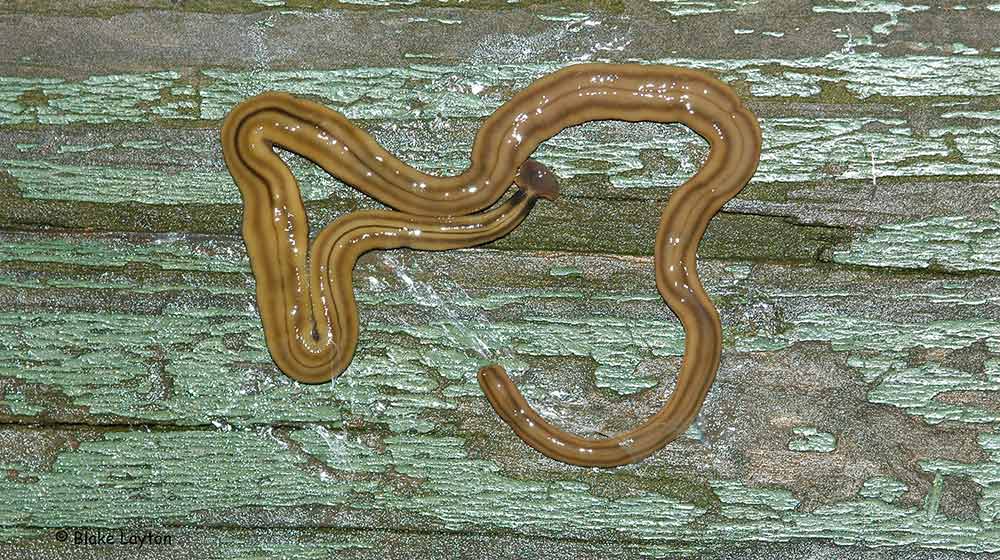Hammerhead Flatworm, Vol. 5, No. 27

Bipalium kewense
Order: Platyhelminthes
Family: Geoplanidae
“We found this thing crawling across the patio. It’s long like an earthworm, flat like a flounder, slimy like a slug, and has a head like a cobra! What is this and do we need to be concerned about it? It looks like it might be dangerous.”
Reaching up to a foot in length (that’s a 2 x 12 this one is resting on) land planaria or flatworms are striking, attention-getting creatures. There are other species of flatworms, but this one with the cobra-like head and the longitudinal stripes seems to be the most common here. These are not native to the US, but they have been here more than a century and are spottily distributed around the warmer portions of the country, primarily because they are readily transported in potted plants where they can fit into spaces between the inner walls of the pot and the soil.
Hammerhead flatworms, a.k.a. shovelhead worms or arrowhead worms, are predators of earthworms and slugs which they track down, disable by covering them with slime, and consume by everting their “mouth” over part of the earthworm’s body and digesting it. So far, there have been no indications of flatworms having any major adverse effects on earthworm populations in the US. Here in Mississippi, they are rarely very numerous, and they fare best in greenhouses or in the warmer, more southern portions of the state.
Like slugs, they are primarily active at night, or on moist, cloudy days, spending their days hiding in some dark, secluded space. This, and the fact that they just don’t seem to be that common, is why they are so rarely encountered. Often populations of flatworms will disappear from a landscape after having been observed there for several consecutive years. This may be an effect of unusually cold winters.
Flatworms reproduce asexually. A portion of the rear of the worm breaks off and grows a new head, producing a new flatworm genetically identical to its parent, a literal “chip off the old block.” They also reproduce sexually, but this is less common. Like many non-native organisms, they don’t seem to have many predators here. This particular species produces an unusual toxin that is repellent to potential predators and may also be used to paralyze prey.
Control: There is nothing that needs to be done to control flatworms. They are harmless to plants and are not usually numerous enough here to impact earthworms. To dispatch individual specimens just sprinkle them with salt. Or, just relax and appreciate them as unusual miniature wildlife.
Blake Layton, Extension Entomology Specialist, Mississippi State University Extension Service. The information given here is for educational purposes only. Always read and follow current label directions. Specific commercial products are mentioned as examples only and reference to specific products or trade names is made with the understanding that no discrimination is intended to other products that may also be suitable and appropriately labeled.
Mississippi State University is an equal opportunity institution.
Sign up to receive Bug's Eye View

